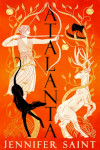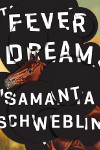Stein Riverton – The Iron Chariot + Podcast
Posted 25th November 2019
Category: Reviews Genres: 1900s, Crime, Mystery, Paranormal, Translation
Comments Off on Stein Riverton – The Iron Chariot + Podcast

Ghostly goings on?
Publisher: Lightning Books (Eye Books); ebook: Abandoned Bookshop
Pages: 110
Type: Fiction
Age: Adult
ISBN: 978-1-785-63161-0
First Published: 1909; 18th March 2019 in English
Date Reviewed: 22nd November 2019
Rating: 4/5
Original language: Norwegian
Original title: Jernvognen (The Iron Chariot)
Translated by: Lucy Moffatt
Our narrator is staying at a hotel near the coast, close to both sea and plains. One evening he is out walking and barred entry to the farmhouse he wants to visit – over the course of a few holidays he’s taken a liking to Hilde, who co-owns it – and so he leaves, but not before spotting the departure of the forestry inspector, Blinde, from the company of Hilde. The narrator carries on his walk. As the evening continues towards the time for him to return to the hotel, he hears an eerie sound, iron chains rattling which, says the fisherman he passes on his way, precedes a death.
The Iron Chariot is a classic crime novella by a well-known Norwegian author who was also a journalist. A somewhat cosy mystery, it may not be as frightening as it likely was when it was first published, but it’s still a good read.
The narrator is joined, in terms of main characters, by a detective who is requested by a fellow hotel guest when a body is found. The detective is just the sort of character you both want and somewhat expect in a book of the period, very casual in his manner, not in any hurry, and he studies things in a different way to others. His presence is what makes the book a bit of a cosy mystery because aside from him the thriller/paranormal aspects get the most time. You have then an interesting pair of characters – one pretty upbeat, always raring to go yet not worried about time, and the other always nervous, bordering on paranoid, and worried. As you would expect, there is more to the detective’s demeanor than the narrator realises, which is perhaps more compelling in making you continue read than the mysteries themselves – when is the detective going to solve it all and how will he have done it?
The use of location is great, pathetic fallacy employed often but never too much. You can see where the narrator is headed, mentally, when he can’t. And of course the lack of technology means more thought (for all this was obviously not in Riverton’s mind).
Some may find that it’s best to read this book keeping in mind the context of its time; there are a couple of areas to be aware of and, ultimately, forgive. The drawn-out nature of the detective’s work, his unwillingness to tell the narrator what he knows, is entirely suitable but it does feel at times like a device to keep the book going, particularly when you’ve worked out a fair amount and want it to be dealt with. The other element is the predictability; you’ll probably work out at least half of the mystery fairly early on. This is a drawback due to the drawing-out of the mysteries – in the context of the whodunnit it is, like the detective’s work, also suitable. And of course the revelation of a couple of the plot points would have been more surprising in times past.
The Iron Chariot is a perfect choice if you want a book with a truly spooky element (because it is very eerie) but nonetheless want something more easy – cosy – to read as well. And it’s a great example of older crime fiction that’s perhaps different to what you’ve read so far (supposing you’ve not read Riverton in Norwegian before).
I received this book for review.
Today’s podcast
The podcast is also available on iTunes and Spotify.
Tune in as Naomi Hamill, author of How To Be A Kosovan Bride, and me discuss post-war Kosovo, using a narrative method that divides opinion, and researching Albanian folklore.
If you can’t see the media player above or would like to see the purchase links, click here for the SoundCloud track page (be aware it may autoplay).
No Comments
Comments closed






















